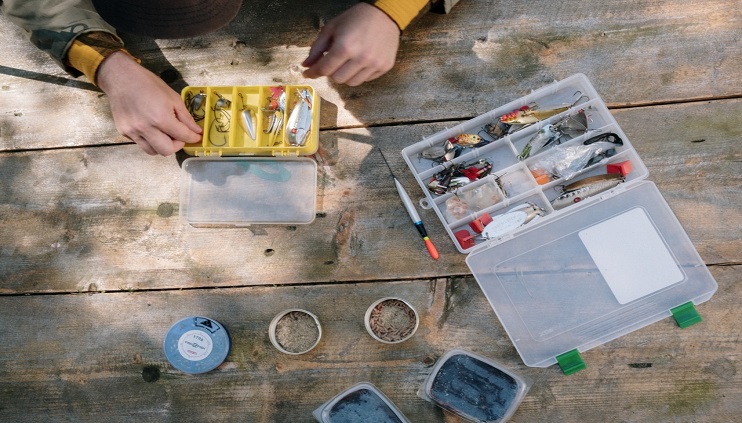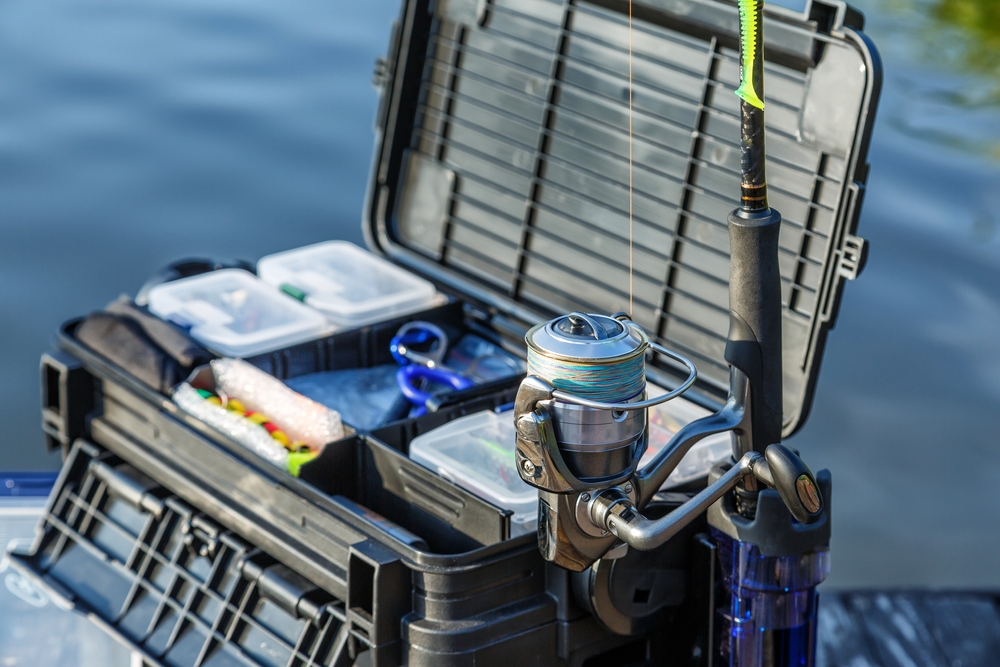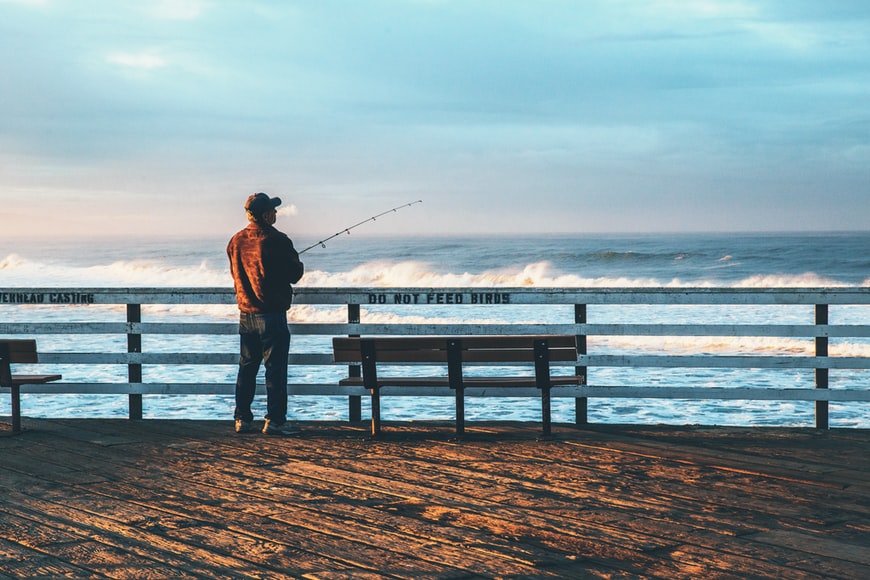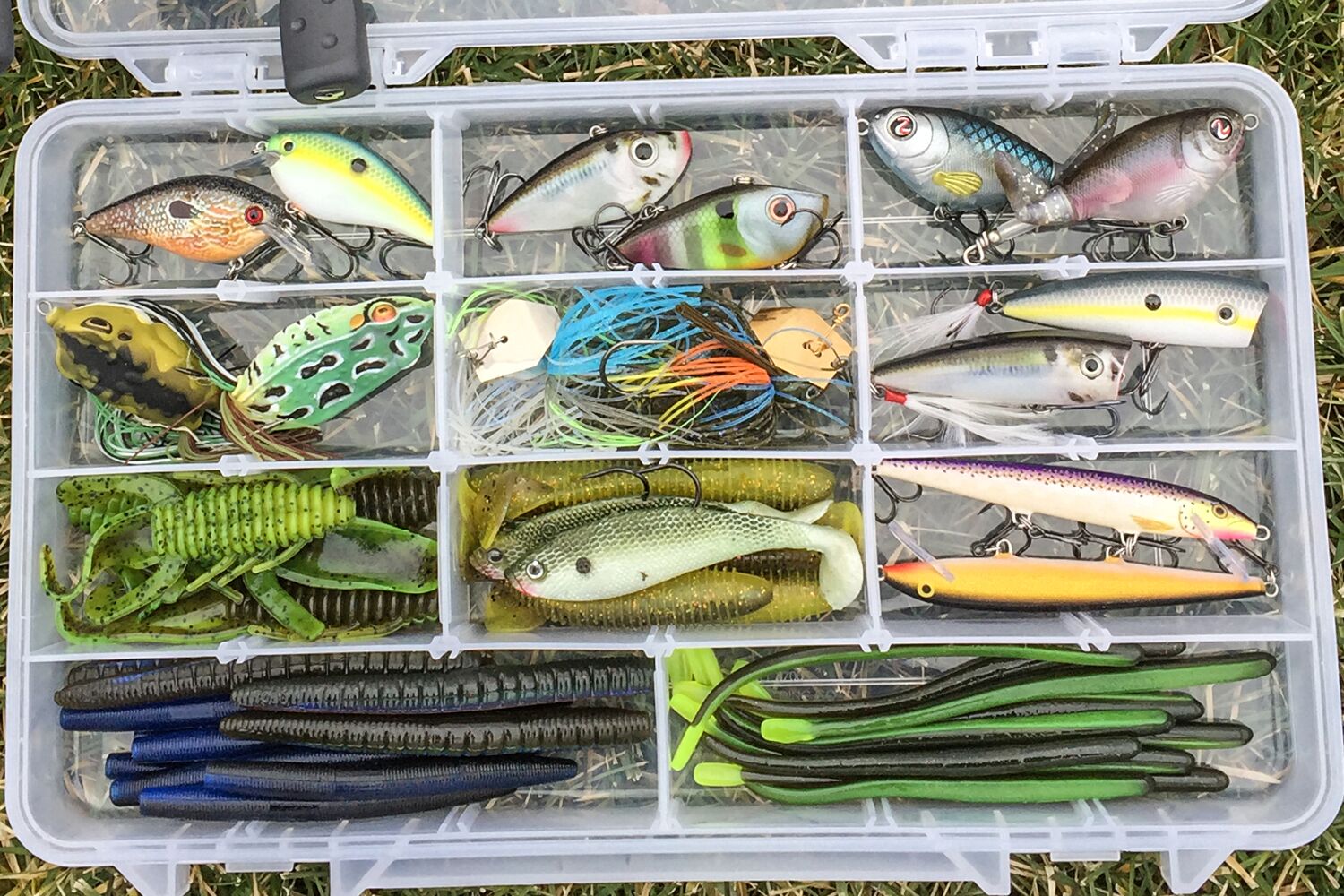Essential Tips for Choosing the Right Gear for Bass Fishing Tournaments
While casually trying to beat your personal record is a great time, and that’s what you likely do most of the time, tournaments are often the main attraction for sport anglers. They let you test your skills, have a ton of fun, and maybe, you can even make some money off them.
However, one of the main speedbumps new anglers run into during their first tournament is what we like to call “gear paralysis”.
They look at all the lures, rod combos, and line options they’ve collected over the years, and they have no idea what they need to bring in that tournament-winning bass. They also don’t have the time to cycle through everything on the water.
Well, to help you find more success in your first bass tournament, here’s an in-depth guide on how to choose the right gear for bass tournaments.
Newsletter Signup
1: It Helps to Understand the Water First
What fish wants has a lot to do with the water it’s in. So, how can you choose the right gear if you don’t know the type of water you’ll be fishing in?
The best way to determine this is to have prior experience with the spot, but even if you don’t, you’ll want to check a few key details.
First, the water clarity is a huge factor.
It will usually dictate the lure color choice you’ll make because you want to use lighter colors in clear water and brighter colors in murky water conditions.
This is also easier to determine if it’s a lake with consistent water color. Some are clear until it rains, and then they get really murky, and you might show up ready for the wrong conditions.
As an added tip, make sure you bring some alternative color options just in case you find yourself in that scenario. We’ll talk more about this, later.
Then, you need to understand the type of structure and flora available.
Is the water a rocky-bottom lake with no cover or structure? Using lures designed to penetrate those features isn’t a good idea. Instead, you’ll want something more suited to open fishing areas.
Finally, depth is important.
If you’re fishing in a 40-foot lake, and you only bring shallow-graded crankbaits and jerkbaits, you’re going to miss out on a massive portion of the water column.
However, if your favorite lure is a deep diver, and the water is only 5 feet deep, you’re not even going to be able to use your favorites.
You can look these bits up online or scout out the water ahead of time if there’s a practice session for the tournament.
Whatever you need to do, this is crucial if you want to pick the right lures.
2: Your Rod and Line Need to Match Your Lure Choice
Lures make up the bulk of your decision-making due to them being the bits of gear that attract bites.
As such, you need to focus on the lures, and then the rest of your rod setup will be dictated by that.
Are you going with lighter finesse lures like weightless flukes? You might want to lower your line poundage, set up a medium spinning rod, and use that instead of the heavy baitcasters a lot of anglers have moved onto in recent years. If you’re tossing big 1-ounce swimbaits, taking the opposite route might be more optimal.
In any case, you need to set up your rods and reels to effectively cast and present the lures you choose throughout this process. You can have the best lure possible, but if your rod and reel can’t present it properly or cast it with any sort of distance, it won’t do well.
However, let’s assume you’re relatively new to fishing, and you haven’t built up a large collection yet. If you don’t have a lot of rods to choose from, you need to choose lures that match water conditions but also match the rods you have available.
3: Bring a Varied Selection
Even if the water conditions and everything else shows that you specifically need a craw-colored crankbait, and that’s all that should work on paper, you need to bring a variety of lures.
This is for a couple of reasons.
First, conditions might change while you’re on the water. Remember, even a day tournament tends to take the entire daytime period to finish. Weather can change, fish behavior will certainly change, and all kinds of factors can render the “perfect” lure ineffective.
On top of that, you have to consider the immense pressure that the fishery will experience with tons of tournament fishermen doing their best to catch anything they can.
Those other anglers are doing the same research you are doing, and they likely came to the same conclusion. If the bass are getting hit constantly by top-tier anglers tossing the same few rigs, you might need to change it up on the fly just to get a bite.
In any case, you need to have a variety of lures on you.
We recommend choosing a few that seem like the most likely to get a bite, picking a few color options that contrast those, and then tossing in a few oddball lures that dramatically change your presentation.
4: Always Bring Your Go-To
We all have that one setup that we catch tons of bass on. Bring yours with you if it’s within the tournament’s rules. This includes the lure, rod, reel, and line.
Bring your go-to setup.
Even if your go-to isn’t great for the tournament on paper, it’s the setup that you’re the most confident with. Confidence plays a major part in your success as an angler.
You have more experience using that setup, you know you can present it properly, and if it’s not working, you know that it’s not something you’re doing wrong with it.
Even if it doesn’t end up being the setup you use to win, it’s still worth having.
5: Splurge on Top-Quality Lures and Terminal Tackle
We all occasionally go down the local big-box store’s fishing aisle and start grabbing cheap gear that we won’t cry over if it gets lost. That’s perfectly fine when you’re just out trying new things and enjoying your time on the water.
During a tournament, you need to spend the extra couple of bucks on high-quality stuff.
You don’t want some cheap worm hooks to bend out, snap, or fail to penetrate a bass’s lip during a tournament. Any bass lost is more than just a disappointment. It could be your win going right back into the depths of the lake.
You also don’t want a lure that doesn’t produce the best action, falls apart quickly, or otherwise doesn’t perform as well as it should.
6: Choose Your Knots and Practice Them
It’s easy to get caught up on lures, rods, and reels, but the knots you use are just as much a part of your toolkit as everything else, and you need to pick the right ones.
For the most part, you’re going to need the strongest knot possible. You don’t want your lure flying off because a knot slipped, and you certainly don’t want a big bass to pull the knot free.
However, different rigs do require different knots to get the right presentation.
If you’re new, we’d recommend learning the Palomar knot for tying directly to the lure, a loop knot for some finesse presentations, and a good uni knot if you’re going to use swivels, leaders, or anything similar.
Make sure you practice these leading up to the tournament, too. You don’t want to have to perfect your tying skills on the water.
7: Polarized Sunglasses
Another item that isn’t directly tied to your primary gear, a pair of polarized sunglasses is a must-have.
These provide two distinct advantages.
First, they protect your eyes and let you look out on the water without any issues. When the sun is reflecting off the surface, it’s blinding, and you’re going to want to stay focused. Not to mention, it’s not good for your eyes to have intense light reflecting in them all day.
Then, polarized sunglasses can also help you spot fish. Your sonar is great, but nothing beats being able to see the fish with your own eyes and cast in the perfect spot to target one.
The color contrast with polarized sunglasses makes this a lot easier as long as the water isn’t extremely murky.
8: Proper Clothing
You might get by just fine during a casual fishing trip in jeans and a t-shirt, but you have to consider how long you’ll be out in the direct sun during a tournament.
There’s a reason a lot of the pros wear long-sleeve, tighter, water-resistant clothing during tournaments, and it’s not because they have to show off their sponsors.
Those outfits keep them from getting burned by the sun, prevent overheating, and if they fall in, they dry quickly to prevent other issues.
Another good idea is to get a pocketed vest. It’s faster to keep your favorite lures right there on your body than it is to stop fishing, walk all over your boat, dig through a tackle box, and then tie something on.
Finally, a hat and a pair of gloves are useful.
The hat will help you keep the sun out of your eyes, but it will also give you a little protection from getting hooked in the head with a bad cast. You don’t want your trip to end early because you got a treble hook stuck in your neck.
The gloves are useful for accidental catches. Depending on where you are, you might hook into alligator gar, snapping turtles, armored catfish, etc.
You’re not guaranteed to only catch bass, and being able to protect your hands while getting rid of those bycatches is important.
9: Buy a Good Pair of Fishing Pliers
Fishing pliers need to get into your kit at some point whether you’re doing tournaments or not, but a lot of anglers get by with a multitool or normal workshop pliers.
During a tournament, the dedicated features of fishing pliers keep you fishing.
You have line cutters, a split-ring tool, plier tips, crimpers, and more in one easy-to-use tool, and you can do practically anything you need to without ever grabbing another tool.
Also, get a pair that comes with a sheath you can put on your vest or belt along with a stretchy cord. This will ensure it’s always within reach, and if you drop it, it won’t be lost in the lake.
Start Your Journey in the Tournament World, Now
There are tournaments available at all skill levels. So, you don’t need to be a pro angler to get in on the action.
However, it's crucial to carefully choose the right gear for bass fishing tournaments to enhance your chances of success.
Look around, find a suitable tournament, and to further boost your chances of success, consider downloading the BassForecast fishing app.
It offers invaluable resources such as detailed weather forecasts, prime fishing times, and expert tips to help you excel in your tournaments.







.png)
.png)